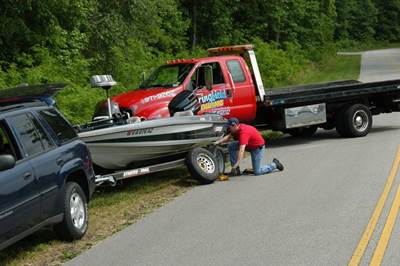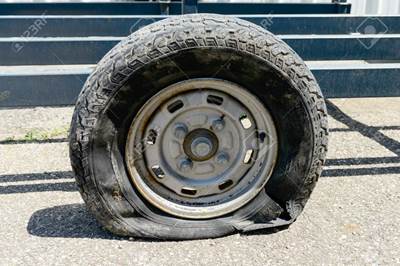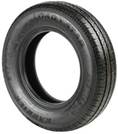
Deep Creek Marina Trailer HandBook

Considerations When Buying a Trailer
Trailers have extreme price variations and buyers often tend to look for the best deal, which is fine for most cases. However, a word of advice-compare apples to apples. Not all trailers are created equal.
*Make sure you are buying the right trailer for the job
*Determine the type of trailer needed and then turn to how it is manufactured
One way to look or a properly engineered trailer is to look for the National Association of Trailer Manufacturers Compliance Decal (www.NATM.com) -Trailer manufacturers displaying this decal on their trailer have passed the National Association of Trailer Manufacturers' (NATM) compliance consultation which follows the Guidelines a compilation of federal safety standards and regulations, and industry best practices that govern trailer construction.
Hooking Up Your Trailer
There are 6 Main items to check when hooking up your trailer:
1. Adequate hitch on towing vehicle and hitch ball at proper height so the trailer is level.
2. Correct ball size and rating for coupler.
3. Safety chains connected properly.
4. Electrical cable connected and secure.
5. Brakes checked (if so equipped).
6. Emergency breakaway brake lanyard connected.
Maintaining Your Trailer
Every time you use your trailer it should be looked over and specific items should be checked.
*Check proper air pressure in the tires
*Check tire tread and overall condition of the tires and wheels
*Look at the suspension system- Are all the fasteners tights? Do the springs look good? No cracks?
*Check the lights. You will need someone in the tow vehicle to operate the signals and brakes while someone else is behind the trailer verifying they work properly.
*Check the coupler, safety chains, and general condition of the overall trailer
Maintenance and Service Summary Chart
| Item | Required Service | Each Use or Weekly | 3 Months or 3,000 Miles | 6 Months or 6,000 Miles | 12 Months or 12,000 Miles |
| Brake Adjustment | x | ||||
| Brake Controller | x | ||||
| Brake Cylinders | x | ||||
| Brake Lines | x | ||||
| Brake Lining | x | ||||
| Brake Magnets | x | ||||
| Brakes | x | ||||
| Breakaway Battery | x | ||||
| Couplers | x | ||||
| Hangers | x | ||||
| Hinges & Gates | x | ||||
| Hubs/Drums | x | ||||
| Safety Chains & Hooks | x | ||||
| Seals | x | ||||
| Springs | x | ||||
| Structure | x | ||||
| Suspension Parts | x | ||||
| Tire Condition | x | ||||
| Tire Inflation Pressure | x |
***The maintenance and Servcie Summary Chart are not all-inclusive and are general industry standards or generally accepted practices. Always refer to the trailer owner's manual, or the owner's manual for the specific component parts for the maintenance and service requirement of your particular trailer.
***The Maintenance and Service Summary Chart has intervals for miles and months during the year. Many trailers, even if used daily, may not reach 3,000 miles during the year. This is why months are also included. If you only use your trailer a few times a year, you may want to adjust the interval to inspect the three and size month items at each use. Then, include all items during an annual service. This will result in more items inspected and servcied more often, which is always better.

Tips for Trailer Tires & Hauling
Boat US reports, "the majority of the calls for help to their Trailer Assist Division come from boaters having tire problems."
Trailer tires typically fail for 3 reasons
1) Keep your tires fully inflated to the maximum pressure listed on the tire sidewall. Unlike a passenger car tire, trailer tires feature a stronger sidewall designed to provide greater stability when under load. Failure to fully inflate the tires can cause heat build-up, leading to premature tire failure. Also, a tire only will only realize its specified load rating when inflated to its maximum psi shown on the tire.
2) Do not overload your tires. Your towing system will only be as strong as the capacity of its lowest-rated component. Running your tires when loaded above their stated capacity will increase the heat build-up, shortening your tire life.
3) Most trailer tires are only rated up to 65 mph. consistently traveling at higher speeds will increase the heat in the tires, which again will shorten their life.

Trailer Tire Safety Tips


Potential Causes for Uneven Trailer Tire Wear
Uneven trailer tire wear can result from incorrect air pressure, a misaligned trailer suspension, a damaged axle or hub or from use of an axle that is rated too high or too low for the trailer's actual weight.
Axles have an upward bend in them, so that once they are loaded up near their rated capacity they can flatten out and be straight when under load. If your axle does not have enough weight on it to flatten it out, then the outside edges of the tires will make more contact with the road than the inside edges.
If your tires were wearing out more on the inside edges then this would suggest the axle was overloaded, bending downward too much, and resulting in the inside edges of the tires making more contact than the outside edges. We suggest making sure your loaded trailer weight is correct for the ratings of the axles you're using.
If the tires are properly inflated, the trailer is not overloaded, and axle and suspension are properly aligned, the tires should be wearing normally rather than only on the inside.
Tires should always be inflated to the maximum pressure listed on the tire's sidewall. This maintains the tires weight capacity and helps them perform and wear best. If the tires are underinflated, especially if the boat is near the trailer's max capacity, the tires can wear on the inside rather than evenly around the tread.
Overloading the trailer can cause the axle to flatten out and make the tires ride at an angle, causing the load to ride on the inside of the tire tread. If the replacement axle is rated lower than the original axle on the boat trailer, this could be causing the tires to ride at an angle and only wear on the inside tread.
If the trailer suspension is not just perfectly squared and the axle straight, the tires can reflect this by wearing unevenly. A bent suspension component can cause the suspension alignment to be off and make the tires ride differently. Another component on the trailer to check is the hub. If the hubs are loose the tires can wear unevenly.

